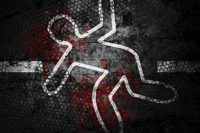Today, the most immediate cause of stress for many westerners is the human factor.” This sentence comes from a recent essay in the Financial Times. Many diseases have been eradicated, and medical advances now give westerners a good chance of living beyond age 80, says the author, Simon Kuper. So what’s left to worry about?
Terrorists. Active shooters. Psychologically damaged individuals like the German airline pilot who suffered from depression and committed suicide by crashing his plane into a French mountain in March, 2015, killing all 150 people on board.
If you’re reading this column you’re responsible for protecting employees from injuries or worse, and naturally you worry about the human factor. Safety folks have dealt with the unpredictable nature of humans since day one. That includes the nature of senior executives, supervisors, outside contractors, visitors, regulators as well as the workforce.
The Blankenship blues
Two news stories in recent weeks capture the human factor in the worst light. (Interesting isn’t it that when safety periodicals or news stories talk about the human touch, it’s almost always in negative terms. What people did wrong. Let’s remember people are also adept at remarkable acts of courage, kindness and compassion.)
A federal judge in West Virginia sentenced former Massey Energy CEO Don Blankenship to a year in prison in April for conspiring to commit mine safety violations at his company’s Upper Big Branch mine during the period leading up to the explosion there that left 29 miners dead in 2010.
The verdict was disappointing to prosecutors; he was found not guilty of the more serious felony charges of making false statements to federal regulators in the aftermath of the blast in order to boost Massey’s stock price. (Had he been convicted on all counts, he would have faced up to 30 years in prison.)
Blankenship was the epitome of a micro manager. He demanded production reports from Upper Big Branch every 30 minutes, even on weekends, and jurors heard him on audio recordings chastising and lecturing subordinates to move coal at all costs. “I could Krushchev you,” he warned in a handwritten memo to one Massey official whose facilities Blankenship thought were underperforming. He called another mine manager “literally crazy” and “ridiculous” for devoting too many of his miners to safety projects. Despite repeated citations by MSHA, Blankenship instructed Massey executives to postpone safety improvements: “We’ll worry about ventilation or other issues at an appropriate time. Now is not the time.”
Blankenship got off easy. Some call him a murderer. But it’s always been hard to prove a senior leader consciously and deliberately intended to kill his employees. Execs consciously and deliberately aim to make as much profits as they can, and if that pursuit sometimes put employees in harm’s way, well, you might call it collateral damage. Only one owner that I know of has done serious hard time relating to injurious or fatal “human collateral damage. “ Craig Sanborn, the owner of a New Hampshire gunpowder plant is serving 10 to 20 years for manslaughter and negligent homicide after an explosion killed two of his workers.
Amtrak goes off track
Joseph Carter Jr., 61, and Peter John Adamovich, 59, never got to see retirement, let alone live into their 80s. Both were killed in early April when Amtrak Train 89, traveling from New York to Savannah, Ga., crashed into their backhoe just before 8 a.m. on a Sunday morning. Both died at the scene of blunt force trauma. Carter, an Amtrak employee for nearly 20 years, worked as a heavy-equipment operator. Adamovich was a 38-year employee. Authorities investigating how the backhoe ended up in the path of a train traveling at more than 100 mph are looking into whether a communications breakdown may have been responsible for the crash. Information about the work crew’s presence on the rails may not have been shared during a shift change, they said.
U.S. Rep. Bob Brady, D-Pa., who toured the crash scene, said conversations with rail workers left him with the impression that only a communications breakdown could have caused the crash.
“I believe without question it’s a communication problem,” Brady said.
Communication breakdowns
We humans do run into problems communicating. Ask anyone in a relationship: husband and wife, parent and child, teachers and students, coaches and players, bosses and subordinates. In healthcare, patient safety is too often put a risk due to flawed “hand offs” – when nurses change shifts or physicians pass a patient to another doc and not all pertinent patient information is “handed off.” Inadequate treatment may follow. Maybe the wrong med is administered. At the wrong time. Or at the wrong dose.
Counter measures
What’s the solution to the downsides of the human touch? OSHA can’t regulate human error. The best fail-safe systems can be bypassed or misused. The courts are best equipped to deal with criminal acts that are black and white, beyond a defense attorney’s ability to obfuscate jurors’ understanding of how a mind works. Behavior-based safety is still criticized for blaming workers and ignoring management decisions. Too many accident investigations conclude that refresher training is the answer -- send ‘em back to school, or use some discipline, fire ‘em. Automation takes the human touch out of the equation, but what if robots get their wires crossed, or artificial intelligence spins out of control. Some of you remember HAL 9000 from the film “2001: A Space Odyssey.” “Hal” says he’s foolproof and incapable of error, but a programming glitch causes the computer to murder four astronauts.
A safety pro once told me what’s needed is “eternal vigilance.” The U.S. spends billions on homeland security, a hugely complicated type of eternal vigilance. Drones, vast computer databases, analytics and coding to hack into encrypted communications are all part of that. Maybe one day drones will hover over workplaces 24/7, supplementing the work of safety and health pros.
But still it comes down to humans interpreting all the data and making judgment calls. Pogo Possum, from the old cartoon strip “Pogo,” once famously said, “We have met the enemy and he is us.” If the human touch is the enemy, it’s also the answer. Mindfulness, alertness, attention to detail, selling solutions, standing up and speaking out, and making tough choices and hard decisions are all human factors.




